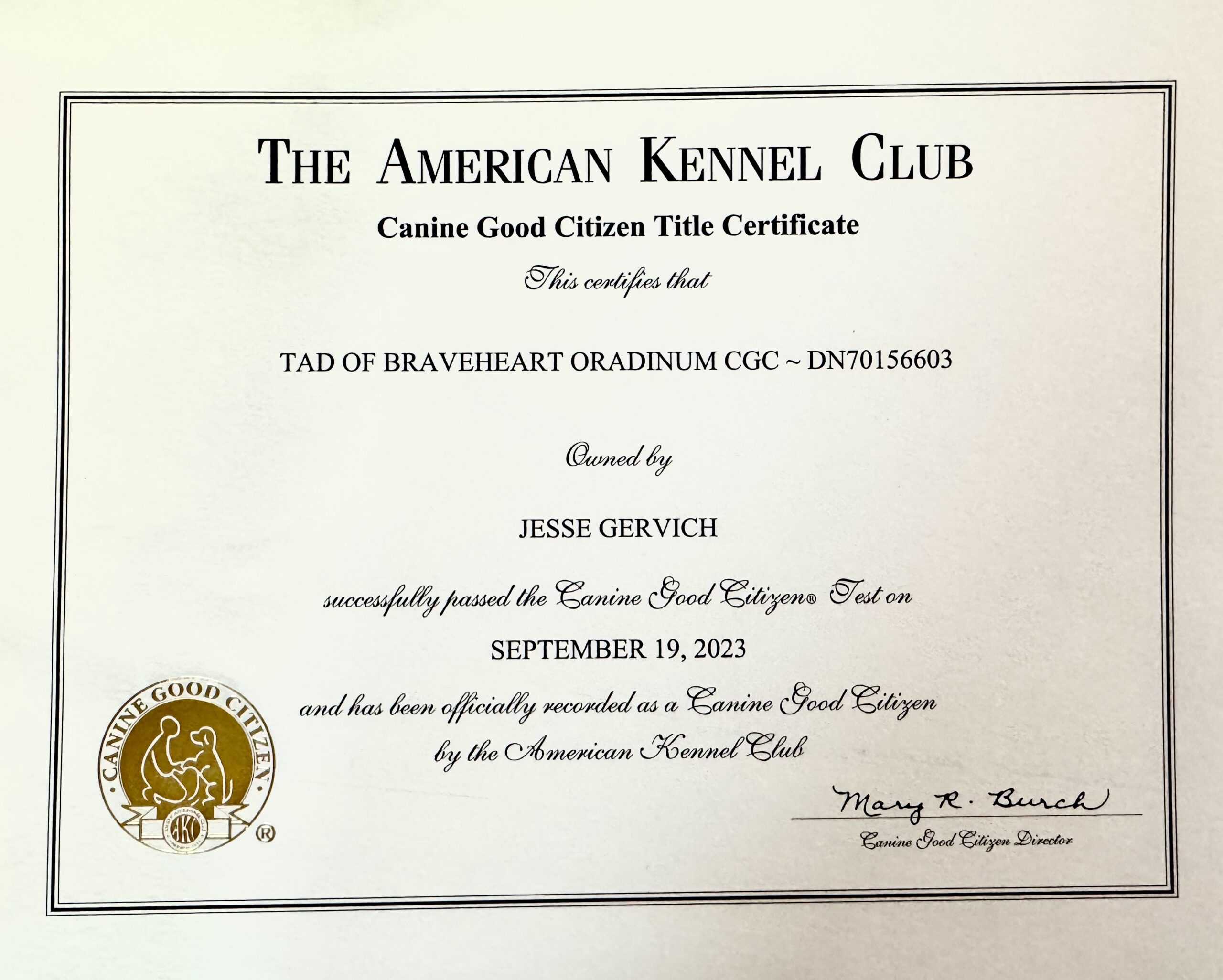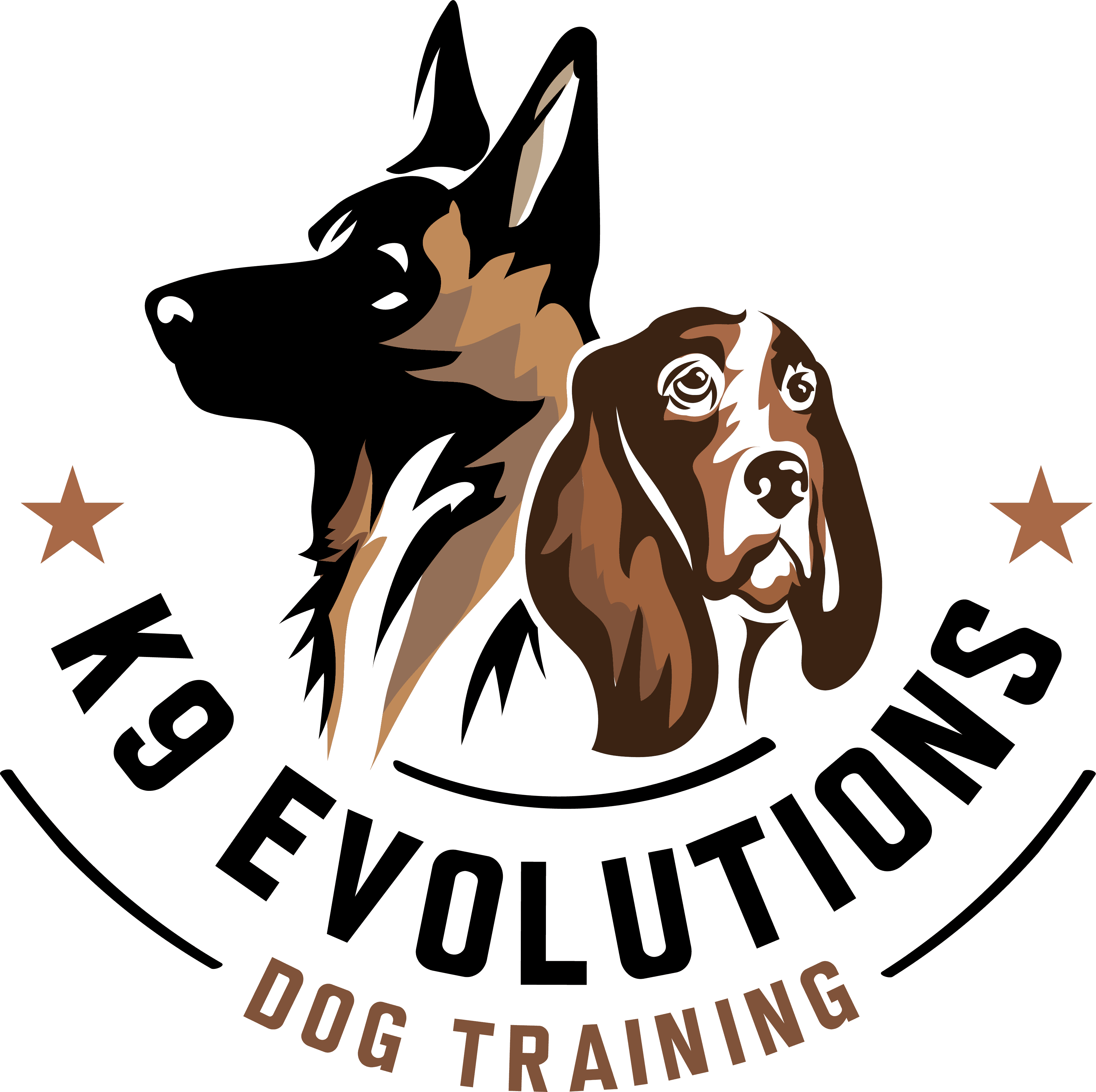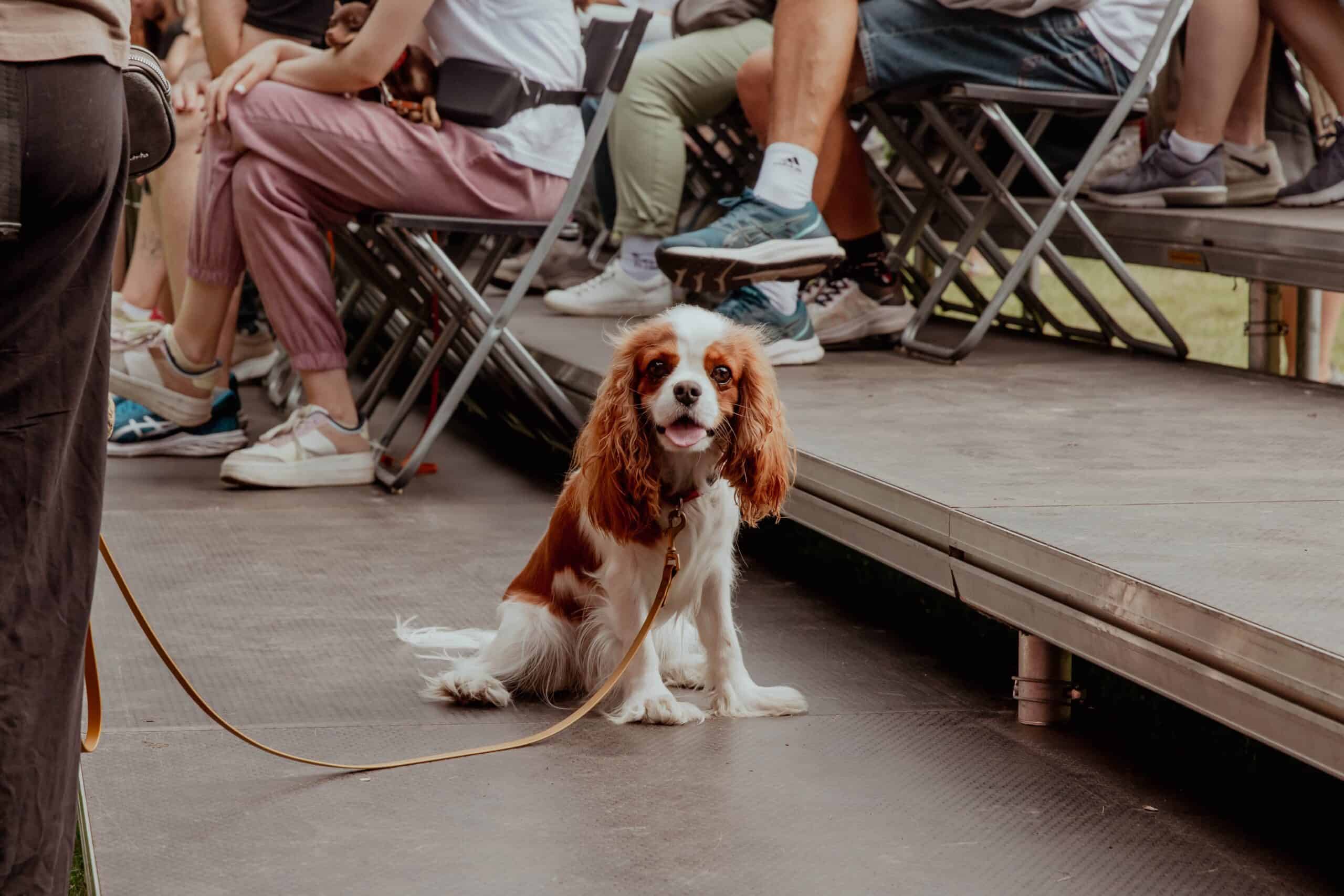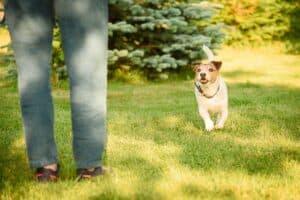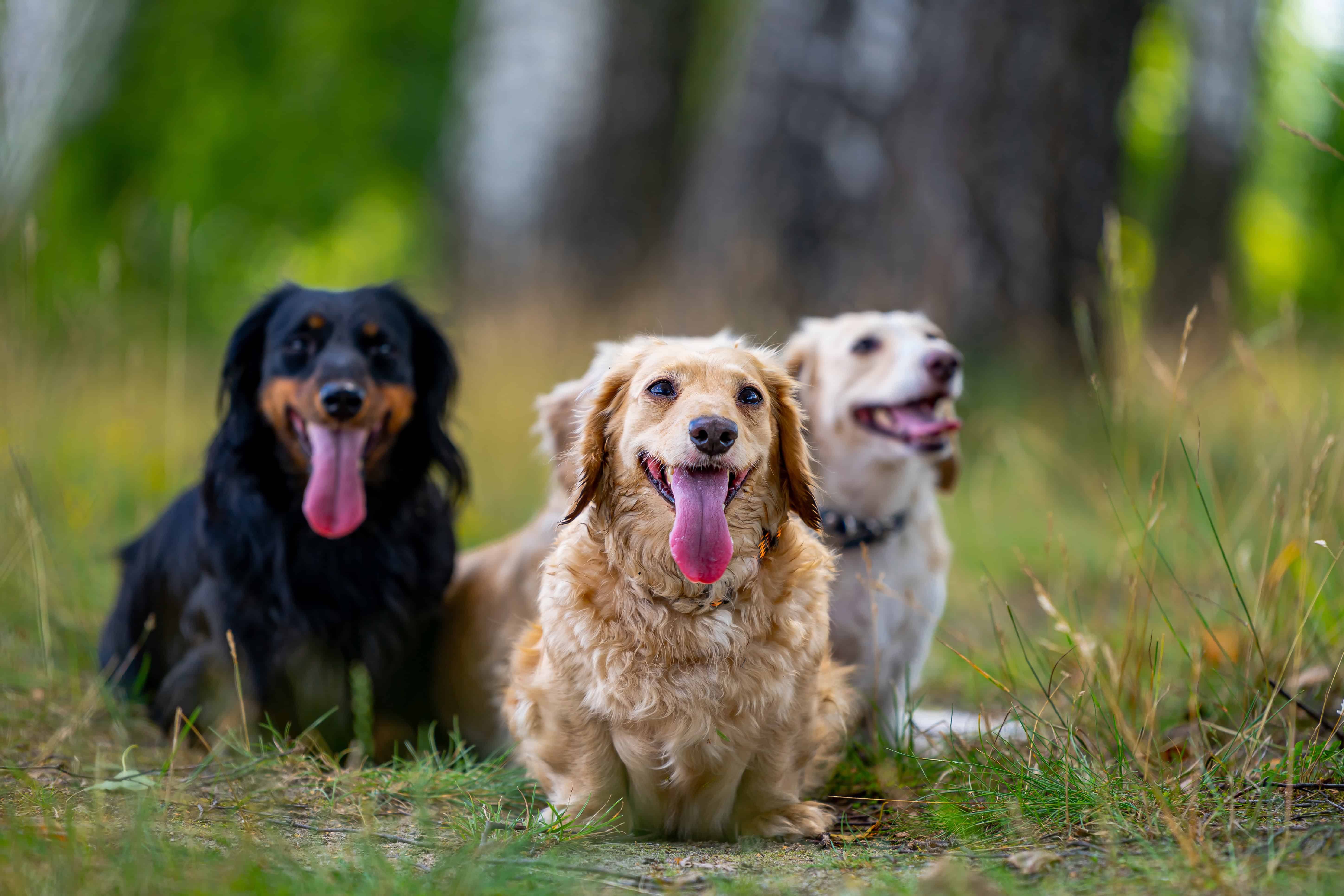The majority of pet dog owners dream of having a well-controlled dog at their side when they head out together in public. An obedient and socialized pup makes outings far more relaxed and enjoyable than the fear of wondering how your dog might react to other dogs, different people, or new environments.
Dreams don’t always match reality – at least not at first. However, there are a number of ways that you can work with your dog to improve their obedience and behavior, such that you feel comfortable taking them with you in public spaces. Most forms of dog training will enhance your dog’s behavior – and training for the American Kennel Club’s Canine Good Citizen (CGC) test is a specific process that will develop your communication and rapport with your dog. This Title demonstrates your dog’s ability to be well-mannered, and can also be used as a platform for therapy dog or service dog work.
At K9 Evolutions Dog Training, we can help you work towards achieving your CGC Title, in addition to evaluating your dog to see if they can pass the CGC test (note: to ensure there is no conflict of interest, we cannot both train and do the official evaluation of your dog for the test). In this article, we’ll explore the key points of the AKC CGC, and then outline the ten behaviors your dog will need to show to pass the test.
What is the AKC Canine Good Citizen Test?
The Canine Good Citizen test was established by the AKC in the late 1980s as a way to demonstrate responsible pet ownership and encourage owners to work with their dogs. The series of tests involved in the CGC are designed to show generalized obedience behavior and a calm, composed demeanor when distractions are present.
The CGC was originally issued as an award, but in 2013, it was upgraded to Title status – meaning that it is part of a dog’s record, and the suffix CGC can be added to a dog’s name. Unlike some other AKC-accredited sports, the CGC can be undertaken by both purebred and mixed breed dogs – they require an AKC number (either an AKC registration number, a PAL number, or an AKC Canine Partners number).
Why should we work towards my dog’s CGC Title?
If you’re considering embarking on the CGC Title for your dog, you might be wondering what the potential benefits might be. As with many dog training endeavors, there are several, including:
– Improve dog-handler relationship. Preparing and completing the CGC requires a dog and handler team to work together. Your relationship and understanding will improve as you work through the activities together.
– Develop valuable skills. The CGC doesn’t just provide you with a title for your dog – it also helps you to practice valuable skills that are useful in everyday settings. For example, walking your dog through a crowd of people can be applied when taking your dog out in busy downtown areas. Overall, the CGC should provide you with numerous obedience skills that can be applied for the rest of your dog’s life.
– Socialization, generalization and work around distractions. Some CGC skills – such as accepting a friendly stranger, reaction to another dog, and weaving through a crowd – must be completed with other people or dogs present. This is great for generalizing your dog’s behavior – it means your dog won’t just listen in the confines of their own home, but will also understand the expectations in novel settings.
– Basis for other dog training endeavors. The CGC works on the fundamentals of your dog’s behavior, but it can also act as a great foundation for other dog training activities. For example, if you intend to take your dog to nursing homes or schools to act as a therapy dog, then the CGC is a great demonstration that your dog is suitable for that type of job. In addition, the CGC is a good starting point for puppies who will eventually be trained for Service Dog work. Some sports require your dog to have a CGC temperament type test. For example, in Mondio Ring, before you can title your dog, completing the CGC is one of the requirements! The reason being is if my dog can’t pass a CGC test, there is no way they’re going to pass a trial in one of the hardest sports in the world. It’s also a safety check to make sure that the dog is stable and safe for judges to be around because there is bitework involved. CGC is a great first goal to achieve for you and your dog, and with the exception of certain behavioral issues or behavioral modification cases, dogs that go through a K9 Evolutions Dog Training program will be able to pass this test.
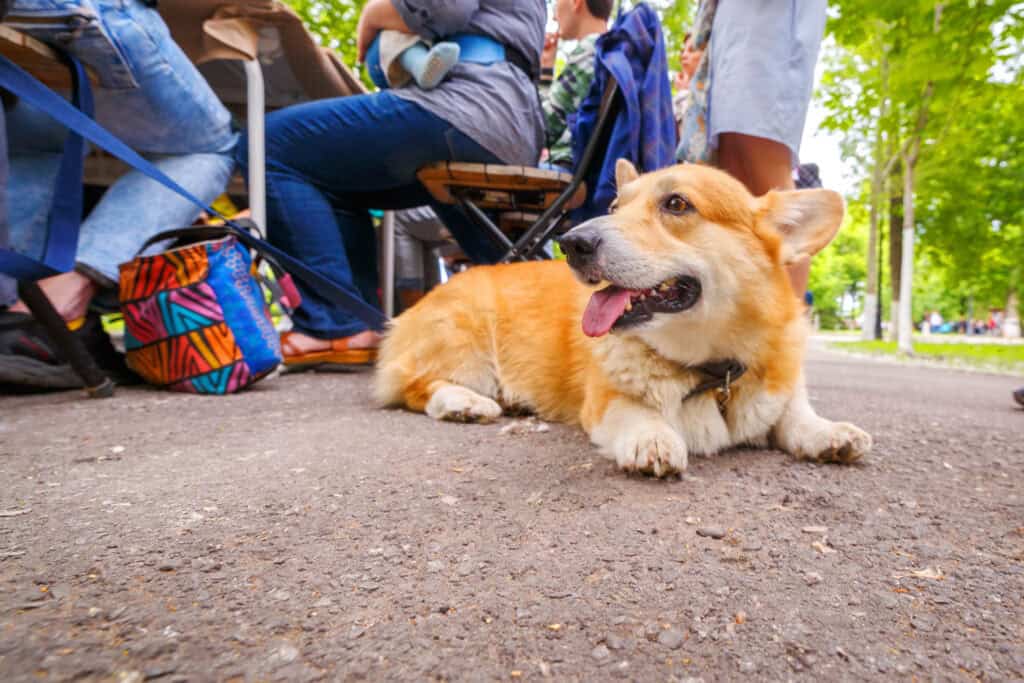
What skills does my dog need to learn?
The Canine Good Citizen test consists of ten separate skills, which will be tested one after another in the test environment. Leash corrections and luring with treats are not permitted during the test.
1) Accepting a friendly stranger. For this test, you must walk towards a friendly stranger and engage in conversation with them. Your dog should be unconcerned by the presence of the stranger, and should behave calmly and politely.
2) Sitting politely for petting. For this test, you should put your dog in a Sit position using an appropriate command. The dog must remain still when petted on their head and back by the examiner.
3) Appearance and grooming. For this test, the dog must be shown to be in good condition, with a clean coat, clean teeth, and no adverse health conditions. The dog must be willing to have their coat brushed, teeth checked, and paws lifted and examined.
4) Loose leash walking. For this test, you must demonstrate that your dog is attentive and listens to commands. Either using a pre-arranged course or listening to directions from the evaluator, you must complete a walk with your dog, completing at least three turns in the process.
5) Walking through a crowd. For this test, you must walk your dog through a crowd of people (for the purposes of the CGC, a crowd consists of at least three individuals). Your dog must remain at the handler’s side and not show anything more than a passing interest in the crowd. They must not react or jump on any members of the crowd.
6) Sit and down on cue. For this test, you should instruct your dog to perform a Sit and Down on command. Then, put your dog into a Stay (you can use either the Sit or the Down for the Stay command). K9 Evolutions Dog Training graduates all have Implied Stays for the Sit, Down & Place commands. The evaluator will then signal for you to walk 20 feet away from your dog, before making a 180 degree turn and returning to your dog and bringing them out of the Stay. The dog must stay in place for the entirety of the time you are walking away and towards them.
7) Coming when called. For this test, your dog will once again be placed in a Sit or Down position. You will walk ten feet away from them, and then call them towards you, using either verbal commands or hand signals.
8) Reaction to another dog. For this test, you will walk towards another handler with a dog from a distance of 20 feet. You will greet the other handler and exchange pleasantries. Your dog must not react or show any undesirable behavior towards the other handler or dog.
9) Reaction to distractions. For this test, the evaluator will present two distractions to your dog. These distractions can be visual distractions, noise distractions, or a combination of the two. Common distractions include throwing a ball, ringing a bell, riding a bicycle, or dropping a crutch on the ground. The dog may show natural curiosity but must not excessively bark or run away from (or run towards) the distraction.
10) Supervised separation. For this test, the evaluator will handle your dog while you hide out of sight for three minutes. Your dog can move around, but must generally exhibit a calm demeanor while you are not present.
In conclusion
The AKC’s Canine Good Citizen test is a great way to teach your dog some fundamental behaviors, obtain a Title for them, and be a fun activity for both of you that helps create a strong handler-dog relationship.
Below, I’ve included in the pictures my dog Zappa’s CGC AKC title that he was required to pass before I could title him in a Mondio Ring Trial (the name appears as Tad because that was his name in his litter). Zappa passed on the first try! If for some reason you don’t pass on your first try, don’t fret; you’ll know what your homework is, and you can take the test again at another time. CGC is a great first goal to go for after you finish the training program at K9 Evolutions Dog Training. Upon graduation, your dog will be ready, but it will be more about developing your handler skills with what your dog knows. Once your dog graduates from K9 Evolutions Dog Training, it is a good idea to take a couple months and get ready for the CGC, rather than make a go of it right away. It’s a great endeavor and even if you’re not interested in making it official, you can do a mock test to see if they would pass or what you may need to work on.
If you would like to begin working towards your CGC Title, or are ready for your dog to be tested, please reach out to us at info@k9evolutionsdogtraining.com or (612) 227-7019 for more information.
